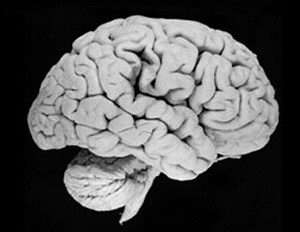September 30, 2011 report
Social hierarchy prewired in the brain

(PhysOrg.com) -- If you find yourself more of a follower than a social leader, it may something to do with the wiring in your brain. According to a new study in Science, researchers from the Chinese Academy of Science have discovered a location in the brain that is active in alpha mice but not in their subordinate cage mates.
The researchers, led by Hailan Hu from the Chinese Institute of Neuroscience, discovered that in social dominant mice, there were stronger electrical connections occurring in the medial prefrontal cortex, or mPFC, of the brain. This study was designed to test just what impact this activity had on social ranking.
To begin, the researchers had to determine which mice were the social dominant mice. Using a clear two, a mouse was placed at either end. The more dominant mouse would push through to get to the other end while the subordinate mouse would retreat.
Once the subordinate mice were determined, the researchers injected them with a virus that inserts the gene GluR4 into the mPFC neurons. The role of GluR4 is to amplify the electrical signals. The tube test was then repeated. These previously timid mice that retreated in the tube were now the dominant mice and pushed forward. In looking at brain slices from the mice, the researchers noted that the mice that received this virus now had electrical connections almost twice as strong as the control mice.
In another test, the researchers injected the dominate mice with another virus that implanted the R4Ct gene which reduces electrical transmissions. This gene reduced the neuron connections by 71% of those found in control mice. When the electrical signals were reduced, these previously dominate mice were now subordinate.
While this brain activity shows a role in social standing in mice, Hu cautions that in humans it is a much more complex relationship. Where social standing in mice is more relative to temperament, human social ranking is also influenced by outside factors such as wealth, heritage and education.
More information: Bidirectional Control of Social Hierarchy by Synaptic Efficacy in Medial Prefrontal Cortex, Science DOI:10.1126/science.1209951. www.sciencemag.org/content/ear … 9/28/science.1209951
ABSTRACT
Dominance hierarchy profoundly impacts animals’ survival, health, and reproductive success, but its neural circuit mechanism is virtually unknown. We found that dominance ranking in mice is transitive, relatively stable, and highly correlates among multiple behavior measures. Recording from layer V pyramidal neurons of the medial prefrontal cortex (mPFC) showed higher strength of excitatory synaptic inputs in mice with higher ranking, as compared with their subordinate cage mates. Furthermore, molecular manipulations that resulted in an increase and decrease in the synaptic efficacy in dorsal mPFC neurons caused an upward and downward movement in the social rank, respectively. These results provide direct evidence for mPFC’s involvement in social hierarchy and suggest that social rank is plastic and can be tuned by altering synaptic strength in mPFC pyramidal cells.
© 2011 PhysOrg.com













